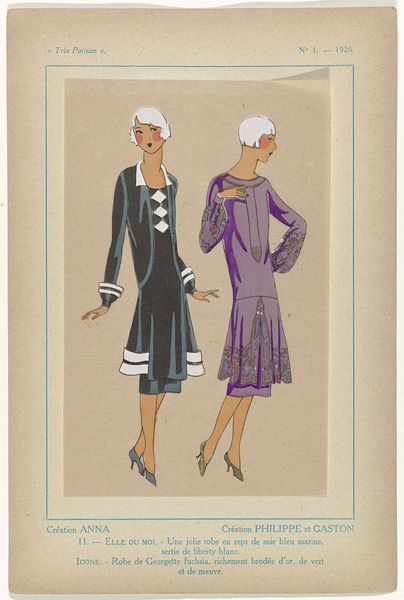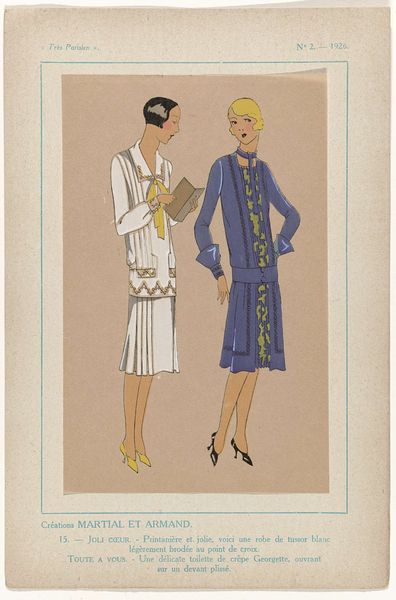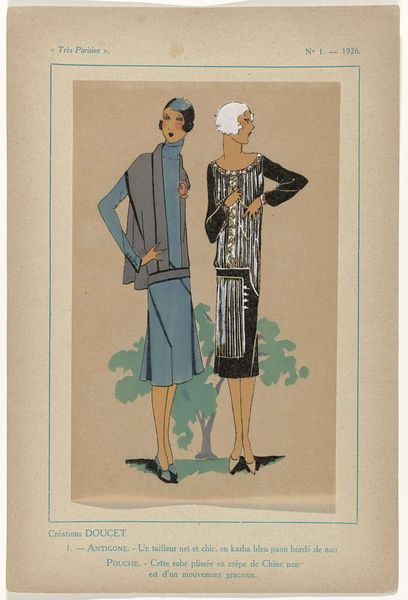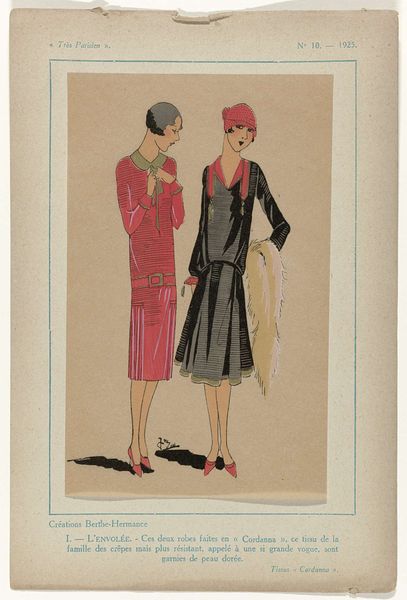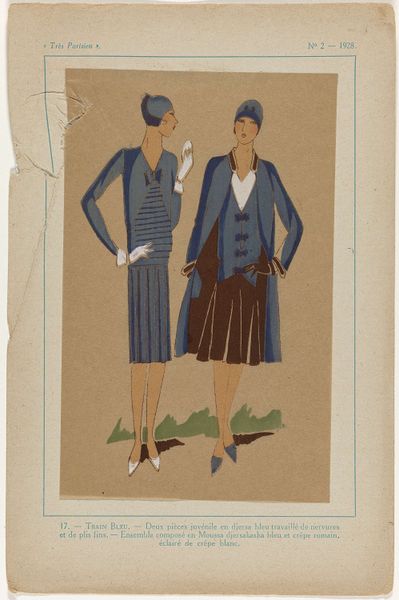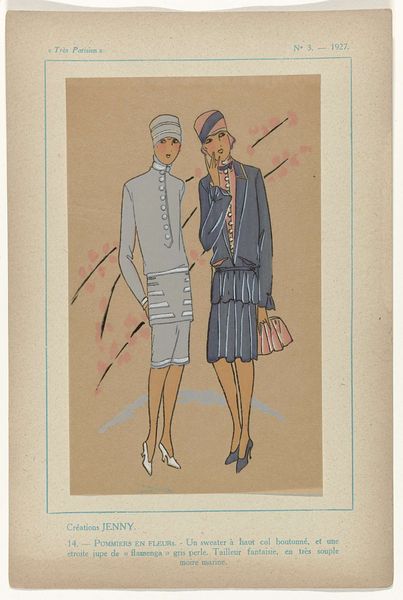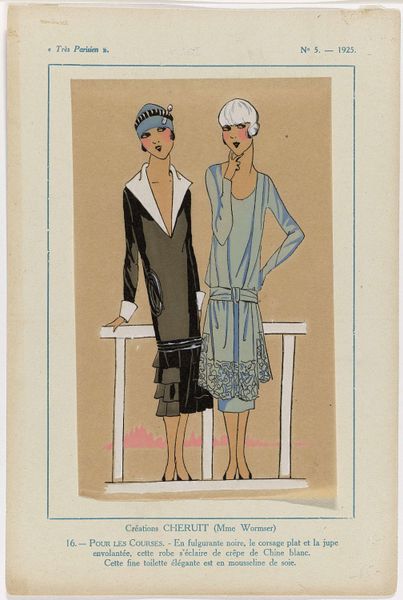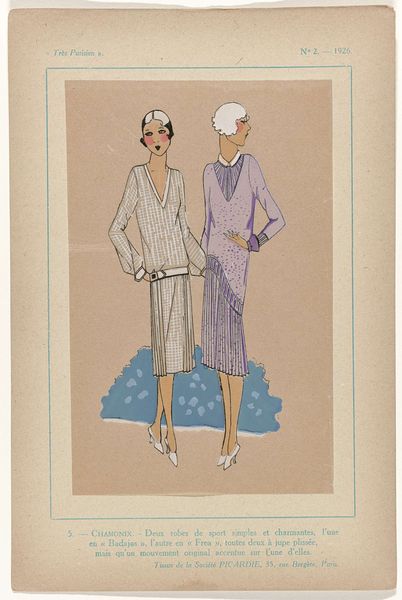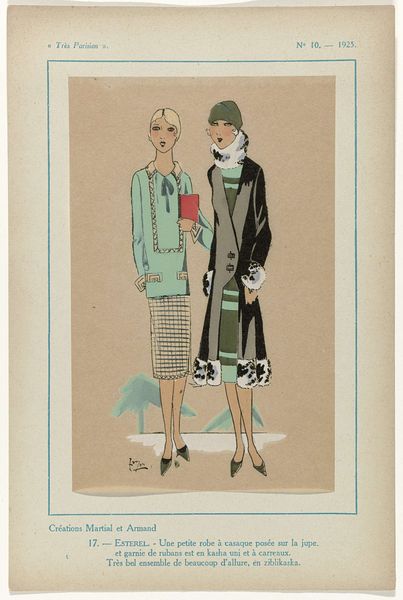
Très Parisien, 1927, No. 11 : 12.-Magicienne.-Robe en taffetas (...) 1927
0:00
0:00
drawing, print, acrylic-paint
#
portrait
#
art-deco
#
drawing
# print
#
traditional media
#
acrylic-paint
#
watercolour illustration
#
dress
Dimensions: height 267 mm, width 177 mm
Copyright: Rijks Museum: Open Domain
This fashion plate, Très Parisien, from 1927, probably made with watercolor or gouache on paper, feels so matter-of-fact. The artist isn't trying to trick us into thinking this is real. The lines are crisp, the colors are muted, and the shapes are flat. It’s like they're saying, "Here's the idea of a dress." Look at the dress on the left. It is all angles and sharp corners. The artist captures the essence of the garment, not the reality. I’m drawn to the way the artist suggests texture through simple patterns. The flapper dress with horizontal bands of monochrome scallops – it is so simple, so flat, yet it gives the illusion of depth and movement. It’s like a code, a set of visual cues that our brains interpret as form. This reminds me of Erte, with his emphasis on graphic form and bold outlines, though this is far less fussy and decorative. To me, it’s a reminder that art is always a conversation, an exchange of ideas across time.
Comments
No comments
Be the first to comment and join the conversation on the ultimate creative platform.
